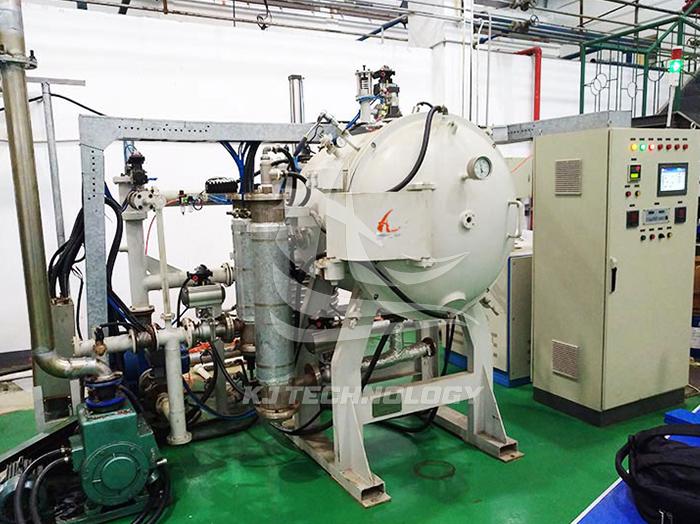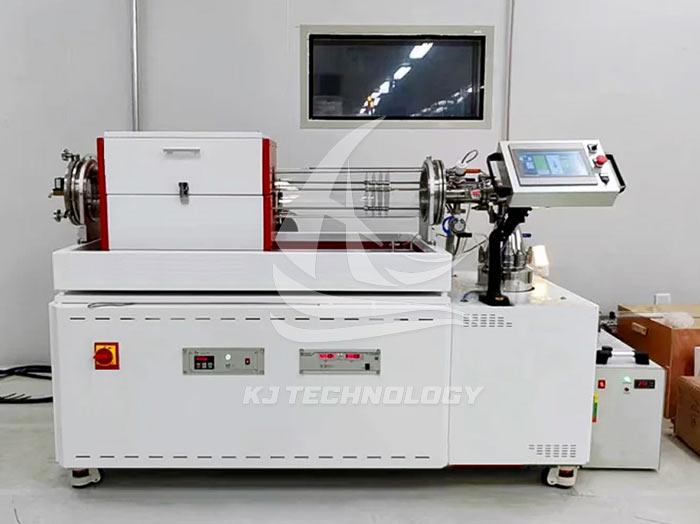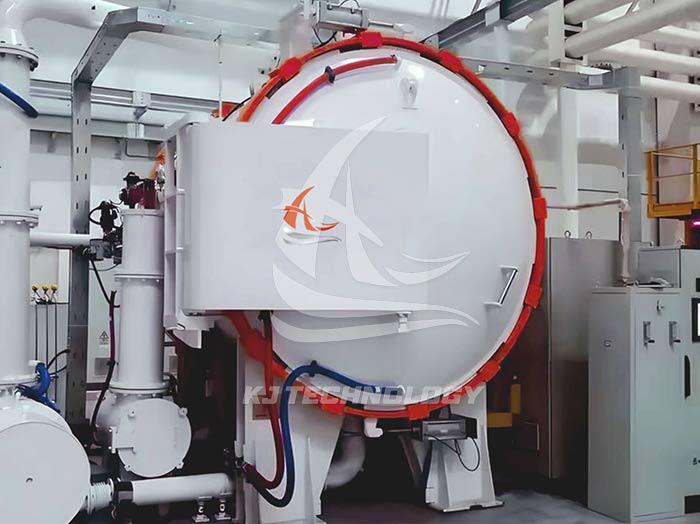VACUUM HEAT TREATMENT FURNACE
 05-19-2025 Author: KJ technology
05-19-2025 Author: KJ technology
Vacuum heat treatment furnace is an advanced equipment that combines vacuum technology with heat treatment process, widely used in the field of metal material processing. Its core function is to heat, insulate, and cool metal materials in high vacuum or low-pressure environments to improve their mechanical, physical, and chemical properties.
1. Working principle
The vacuum heat treatment furnace extracts the air inside the furnace through a vacuum system, creating a high vacuum environment (usually with a pressure below 10 ⁻ Pa), thereby eliminating the influence of active gases such as oxygen and water vapor on the material. In a vacuum environment, the heating and cooling process of metal materials is mainly achieved through thermal radiation and conduction, avoiding defects such as oxidation, decarburization, and carbonization, while promoting the homogenization and refinement of the internal structure of the material.
2. Main features
No oxidation, no decarburization
The vacuum environment effectively prevents oxidation and decarburization of metal surfaces, maintaining the purity and smoothness of material surfaces, especially suitable for high-precision and high-performance parts.
Material performance optimization
By precisely controlling the heating and cooling rates, vacuum heat treatment can significantly improve the hardness, toughness, wear resistance, and corrosion resistance of materials, extending their service life.
energy conservation and environmental protection
The vacuum heat treatment furnace adopts efficient heating elements and insulation materials, with low energy consumption and no harmful gas emissions, which meets the requirements of green manufacturing.
Process flexibility
Multiple heat treatment processes can be implemented, such as quenching, annealing, tempering, aging treatment, brazing, sintering, etc., to meet the processing needs of different materials.
High precision temperature control
Equipped with advanced temperature control system, high temperature uniformity and precision control ensure the stability and repeatability of the process.
3. Application Fields
EADS
Used for manufacturing key components such as aircraft engine blades, turbine disks, fasteners, etc., materials are required to have high strength, high toughness, and high temperature resistance.
automotive industry
Handle engine gears, transmission shafts, molds, etc. to improve wear resistance and fatigue strength, and extend service life.
Mold manufacturing
Used for quenching and tempering of high-speed steel and hard alloy molds to enhance their hardness and resistance to thermal cracking.
electronic industry
Manufacturing semiconductor devices, magnetic materials, vacuum tubes, etc. requires materials with high purity and low impurity content.
medical equipment
Process biomedical materials such as stainless steel and titanium alloys to ensure their corrosion resistance and biocompatibility.
4. Type and Structure
Vacuum heat treatment furnaces can be classified into various types based on heating methods, furnace structures, and functional requirements:
Heating methods: resistance heating furnace, induction heating furnace, electron beam heating furnace, etc.
According to furnace structure: vertical furnace, horizontal furnace, well furnace, bell jar furnace, etc.
According to functional requirements: vacuum quenching furnace, vacuum annealing furnace, vacuum brazing furnace, vacuum sintering furnace, etc.
Typical structures include furnace body, vacuum system, heating system, temperature control system, cooling system, and safety protection device.
5. Operation and maintenance
operation point
Before loading the furnace, the surface of the workpiece should be thoroughly cleaned to avoid oil stains and impurities affecting the vacuum degree.
Strictly set the heating temperature, holding time, and cooling rate according to the process parameters.
Monitor parameters such as vacuum degree, temperature, and pressure to ensure process stability.
Maintenance
Regularly inspect the vacuum pump, seals, and heating elements, and replace worn parts in a timely manner.
Clean up carbon deposits and oxides inside the furnace to maintain cleanliness.
Verify temperature sensors and temperature control instruments to ensure temperature control accuracy.
6. Development Trends
Intelligence and automation
Industrial Internet and artificial intelligence technology are introduced to realize remote monitoring, fault diagnosis and process optimization.
Efficient and energy-saving
Develop new heating elements and insulation materials to reduce energy consumption and improve thermal efficiency.
Multi functional integration
Combining vacuum heat treatment with other surface treatment techniques such as carburizing and nitriding to achieve composite processing.
Green and environmentally friendly
Adopting pollution-free cooling media and environmentally friendly heating methods to reduce the impact on the environment.








